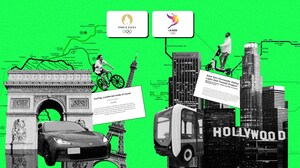Bluedot Releases Six Key Restaurant Industry Predictions for 2022
Industry consolidation increases tech budgets; Off-premise strategies overtake in store innovation; Mobile data becomes pivotal to brand loyalty
SAN FRANCISCO, Dec. 7, 2021 /PRNewswire/ -- Bluedot, a customer arrival platform that empowers brands to provide real-time interactions and pickup solutions, today revealed six restaurant industry trends and predictions expected to emerge in 2022.
"In the coming year, restaurant brands will have access to more capital as investors are attracted by the M&A activity and IPOs that took place in 2021. As a result, substantially increased tech budgets will allow brands to focus on transformative off-premise strategies, with a hyper focus on the customer experience as a differentiator," said Emil Davityan, Bluedot co-founder and CEO. "Market consolidation also opens up a massive opportunity for cross promotion of loyalty programs, deals, offers, and rewards across brands. As restaurant app usage continues to soar, brands will have far more access to consent-based customer and location data than before, providing actionable insights into the customer journey end-to-end which is critical to future brand loyalty."
Restaurant trends and predictions for 2022 include:
- Brands will utilize troves of physical journey data to strengthen brand loyalty. The surge in restaurant app usage means restaurant brands have access to data they didn't have prior to COVID. This wealth of data will allow brands to make data-driven operational and marketing decisions based on quantitative consumer buying behavior with a focus on the customers' physical journey, including when they visited, for how long, where an order was placed on-premise, and if an order was picked up in the drive-thru, inside or at curbside.
- The roles of CMO and CIO are merging. There is now an inflection point between ordering and customer engagement, resulting in the CMO and the CIO working more collaboratively than ever before. CIOs will be involved in providing access to data to multiple teams within the organization while CMOs will exert larger influence over IT budgets as insights into customer behavior drive strategic marketing decisions. Success will be measured and optimized using data. Richer data will fuel more robust and customizable programs such as loyalty campaigns, deals and offers, and menu items.
- Off-premise technology investments will take precedence over in-store strategies. Acquisitions and public offerings have created access to more capital and restaurant brands have significantly increased technology budgets. Investments in off-premise or "over the store" solutions (including mobile technology) will take precedence over in-store legacy systems that require more time and resources to modernize, such as static menu boards and back-end kitchen technology. With more emphasis on off-premise solutions like mobile apps and loyalty programs, brands can create a better customer experience by offering real-time communications regarding current deals and promotions, menu changes or limited items, and more.
- Deals and promotions will reach across multiple brands. With recent market consolidation, marketing strategies will become more centralized. Customers will be rewarded with deals and offers across a constellation of parent and sister brands as more and more brands aggregate. Loyalty programs especially will become more flexible.
- Brands will commit to ongoing investments in automation, especially in drive-thru and curbside. The unexpected labor shortage has cemented the need for ongoing investment in automation, which began as a move to offer contactless solutions during the onset of the health crisis. Consumers already prefer self-service and digital ordering over ordering from restaurant staff according to the latest State of What Feeds Us report, which found that 60% of consumers prefer using their mobile phone or kiosk when placing orders. To complement existing processes, we'll see automation evolve with apps, orchestrated messaging, kiosks, and digital menu boards that offer easy and more convenient ways to join loyalty programs, redeem rewards, find deals, and other brand interactions that traditionally required staff.
- Supply chain shortages will be addressed with more digitalization. Brands will start leveraging customizable digital menus that can update in real time. Items that aren't available can be removed rapidly and at the local level because supply chain shortages in the southwest can be very different than shortages in the northwest. Digitalization also offers brands the opportunity to preemptively communicate with customers, offer alternative items, or even compensate them for any inconvenience.
About Bluedot
Bluedot is a customer arrival platform that empowers brands to provide real-time interactions and pickup solutions. The company's hyper-accurate location technology identifies exactly when and where a user arrives whether that's entering a store, pulling into a curbside pickup space, or at a parking lot. Bluedot enables brands to provide timely messaging, proximity offers, automated loyalty identification, frictionless curbside pickups, gamification, and more. Easy to implement, Bluedot is inherently compliant with GDPR and CCPA.
Bluedot works across key industries including retail, restaurants, and transportation. The global brands that trust Bluedot for their location strategy include Federal Realty, McDonald's, Dunkin', Six Flags, and IAG. For more information on Bluedot and its solutions, visit bluedot.io.
SOURCE Bluedot

WANT YOUR COMPANY'S NEWS FEATURED ON PRNEWSWIRE.COM?
Newsrooms &
Influencers
Digital Media
Outlets
Journalists
Opted In





Share this article